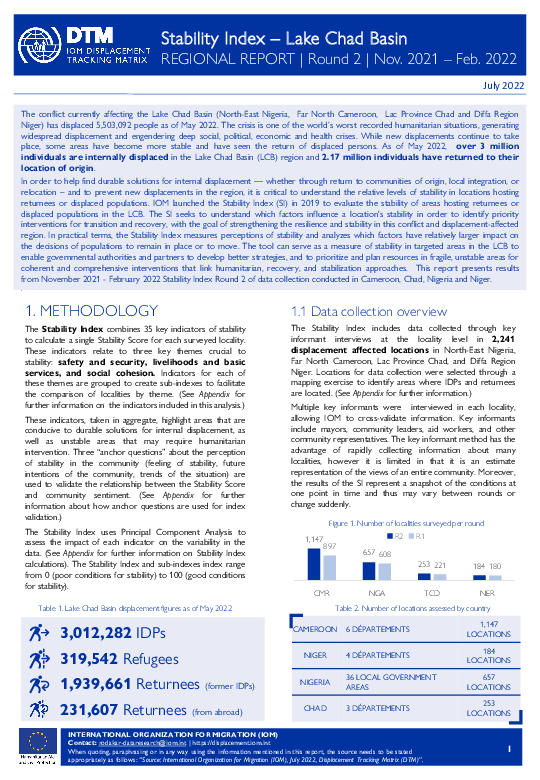-
Countries
-
Data and Analysis
-
Special Focus
-
Crisis Responses
West and Central Africa — Lake Chad Basin — Stability Index Report 2 (November 2021 — February 2022)
In order to help find durable solutions for internal displacement — whether through return to communities of origin, local integration, or relocation – and to prevent new displacements in the region, it is critical to understand the relative levels of stability in locations hosting returnees or displaced populations. IOM launched the Stability Index (SI) in 2019 to evaluate the stability of areas hosting returnees or displaced populations in the LCB. The SI seeks to understand which factors influence a location's stability in order to identify priority interventions for transition and recovery, with the goal of strengthening the resilience and stability in this conflict and displacement-affected region. In practical terms, the Stability Index measures perceptions of stability and analyzes which factors have relatively larger impact on the decisions of populations to remain in place or to move. The tool can serve as a measure of stability in targeted areas in the LCB to enable governmental authorities and partners to develop better strategies, and to prioritize and plan resources in fragile, unstable areas for coherent and comprehensive interventions that link humanitarian, recovery, and stabilization approaches. This report presents results from November 2021 - February 2022 Stability Index Round 2 of data collection conducted in Cameroon, Chad, Nigeria and Niger.

